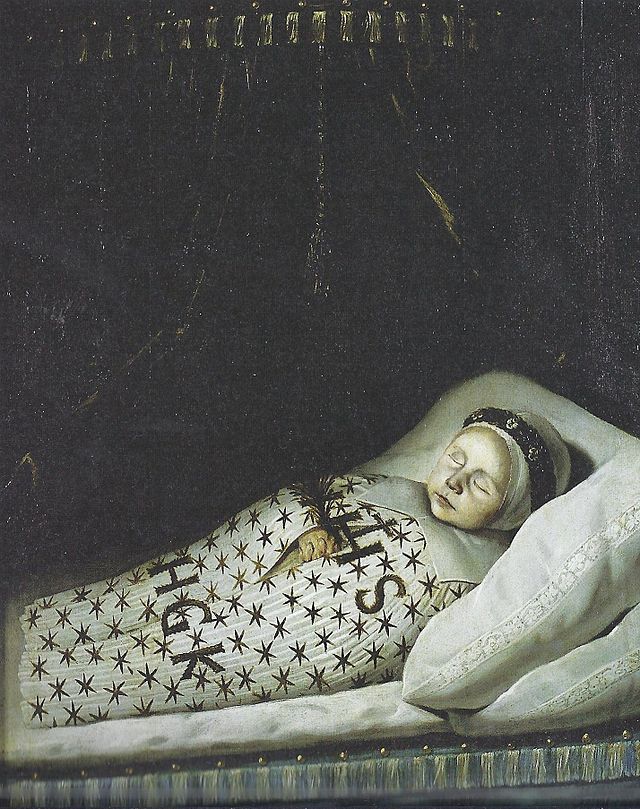
Jan Jansz, Portrait of an unknown dead child, oil on panel, 84 x 68 cm, 1654, Groninger Museum, Groningen. (Photo Credit: Wikimedia Commons).
This eerie, unsettling portrait depicts the final repose of an unknown dead child. The work belongs to the genre of post mortem portraiture, sometimes known as deathbed portraits, which became popular after the Protestant Reformation. This style of portraiture depicts a deceased child or person lying on their deathbed in their finest clothing and arranged so that they look peaceful. The style was popular in the Netherlands and in Flanders starting from the late sixteenth century, but tailed off in the final decades of the seventeenth century before disappearing altogether in the eighteenth, when the positivistic spirit of the enlightenment may have considered them too morbid.
In this work, a young child lays down, adorned in a white cloak decorated with maroon five point stars; a style of Catholic outfit which was banned by a resolution of the mayors and council of Groningen. The letters on the child’s outfit are IHS HGK. The IHS monogram is an abbreviation or shortening of Jesus’ name in Greek to the first three letters and the HGK are likely to be the child’s initials. Curiously, the cloak, which bifurcates in tubular fashion for the legs, is cut off abruptly where one might imagine that the child’s body ends; but no feet are visible. This adds to the uncanny mystery of the work and the overall discomforting sense that it evokes.
Jan Jansz’s work is interesting because of what it tells us about funerary rituals and superstitions. In this work, the child holds a posy, intended to protect the deceased against evil spirits. Around the child’s head is a mourning wreath, known in Dutch as a “hoedje” (little hat), likely to be laurel or palm. In the Netherlands, these intricate wreaths of greens were traditionally placed around the heads of unmarried people, who were mostly children. This is part of the general body decoration called “pelen”, relating to the English word “pall”, as in “pallbearer”, which in funeral contexts refers to the cloth (sometimes a flag) over the body or casket. The work was previously held in a private collection then was acquired by the Groninger Museum in Groningen around 1899.